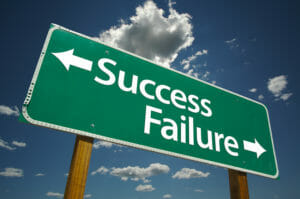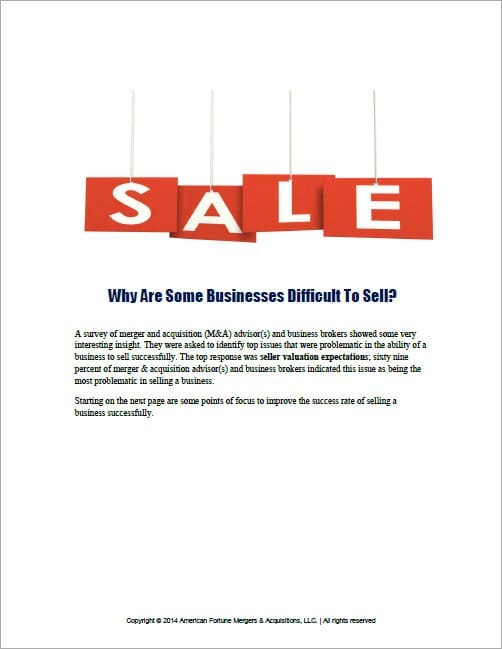Learn How to Achieve a Successful Business Sale Using Merger and Acquisition Consultants
Excitement. It’s the wave that motivates us, keeps us focused, and propels us to get things done. This is true no matter the situation or the individual. The problem is, if that excitement is not maintained or capitalized on while its at its peak, you run the risk of loosing it and the potential for a successful outcome.
The merger and acquisition consultants are not numb to this psychology. In fact, like most people and businesses, it behooves us to not only be tuned-in to this wave of energy but to ensure the wave endures…from the very beginning of a prospective sale or acquisition all the way through to the signing on the dotted line.
The article below, extracted from a whitepaper produced by Merrill Datasite entitled “The Seven Critical M&A Transaction Mistakes and How to Avoid Them,” does a great job of suggesting how to keep enthusiasm and excitement up until the end-goal is accomplished. Although it speaks directly to the merger and acquisition “crowd,” it’s underlining message can be universally applied.
How to Achieve a Successful Business Sale Using Merger and Acquisition Consultants
Companies Often Make Common Mistakes That Can Negatively Impact A Merger and Acquisition (M&A) Transaction.
Successfully completing a large-scale Mergers and Acquisitions transaction is a complex process. The potential for any number of mistakes and/or problems is extensive, but most fall into seven distinct areas that include the following: improper planning, unrealistic project assessments, improper allocation of time, poor resource utilization, miscommunication, lack of secure business tools, and limited access to quality business information. The occurrence of any one or a combination of these circumstances has the potential to derail even the most viable Merger and Acquisition opportunity.
Challenge: Uncover “Synergy Savings” to Prevent “Deal Fatigue” and Post-Merger Business Problems
One of the reasons that Mergers and Acquisitions transactions fail is an inability to quickly identify all the potential areas of “synergy savings” (areas where the newly merged organization achieves substantial cost savings) early in the discovery process. The element of time becomes a cruel taskmaster here, and unless all areas of synergy savings are discovered within a reasonable period of time, the potential for “deal fatigue” is heightened. When this occurs, the likelihood that one or both parties will have the fortitude to complete the process diminishes, leading to a failed agreement. Therefore, it becomes imperative that both buyers and sellers are able to quickly leverage information resources and tools that will uncover all synergy savings opportunities, allowing the discovery process to move forward and the merger and acquisition transaction to be completed.
Solution: Control Information to Accelerate Decision-Making and Business Plan Implementation
Controlled information access ensures the secure use of critical business data and information management tools that balance the needs of both buyers and sellers during the Merger and Acquisition process. This accelerates decision-making and post-transaction business plan implementation. Controlled access also offers several unique advantages that provide buyers with the timely and accurate information they need to determine the overall viability of the transaction. It also empowers the seller to protect “live documents” that may contain sensitive, proprietary, or copyrighted information from being distributed outside of the active bidding group(s). Such circumstances increase the likelihood of information falling into the hands of competitors, the media, or unscrupulous online predators.
The Importance of “Synergy Savings” in the Merger and Acquisition Transaction Process
A merger or acquisition provides a significant added value by allowing a buyer to get closer to a targeted customer base, improving the existing supply chain or ensuring access to greater amounts of capital. For a distressed company, a buyer’s ability to acquire another company’s assets, intellectual property, and management capability at a discounted price presents an attractive alternative to building a similar organizational infrastructure from scratch.
In a business sale & acquisition, both buyers and sellers initially enter into the merger and acquisition transaction process with different goals in mind. For example, buyers are primarily ego driven since they are concerned with expected valuation, or how much they will gain from the transaction. On the other hand, sellers are primarily optimism driven and are more concerned with the expected target audience of the transaction. Simply put, sellers are most interested in who the potential buyers are and how they will impact the future of the seller’s organization. Therefore, a successful Merger and Acquisition transaction involves balancing the needs of both the buying and selling parties.
Time management is an essential part of a successful Merger and Acquisition transaction. Unless all areas of synergy savings can be realized within a reasonable amount of time after the start of the discovery process, the prospect of “deal fatigue” increases, which dramatically diminishes the chances for success. From the enterprise perspective, capital markets and corporate spending priorities change over time. Therefore, both buyers and sellers must be able to quickly establish and quantify an identifiable amount of value in the Merger and Acquisition transaction or the deal may not be worth pursuing.
According to the popular book The Art of Mergers and Acquisitions Integration by Alexandra Reed Lajoux, businesses must realize approximately 4% to 6% in synergy savings within the first 12 months after the consummation of a merger or acquisition. For example, if the size of the transaction is $500 million, then the buyer needs to obtain approximately $20 million in synergy savings within one year from sources such as personnel, facilities, or by making new process improvements.
In addition to uncovering synergy savings, a successful Merger and Acquisition transaction also involve the coordination of a multi-layered and diverse set of people, processes, information, and tools. The ability for an organization to leverage these highly effective resources in order to quickly identify process challenges and prevent mistakes can help both parties reach a mutual agreement.
Buyers need a system that provides rapid access to critical, time-sensitive information so they can better evaluate the overall value of transactions. At the same time, sellers need a system that provides them with controlled access to decision-related data in an orderly fashion that will ensure that intellectual property and proprietary business information used during the negotiation period does not fall into the wrong hands in the event both parties walk away from an agreement.
Contact American Fortune for How to Achieve a Successful Business Sale Using Merger and Acquisition Consultants.
American Fortune has successfully assisted in the following areas of the USA: Columbus Ohio, Atlanta Georgia, Lexington Kentucky, Bowling Green Kentucky, Nashville Tennessee, Memphis Tennessee, Cincinnati Ohio, Dayton Ohio, Toledo Ohio, Los Angeles, Cleveland Ohio, Pittsburgh Pennsylvania, Baltimore, Maryland, Indianapolis Indiana, Chicago Illinois, Detroit Michigan, Flint Michigan, Tampa Florida, St. Louis Missouri, Kansas City Kansas, Des Moines Iowa, Minneapolis Minnesota, Louisville Kentucky, Oklahoma City, Oklahoma, Dallas Texas, Fort Worth Texas, Denver Colorado, San Francisco California, Salt Lake City Utah, Phoenix Arizona, Lexington Kentucky, Los Angeles California, San Diego California.







